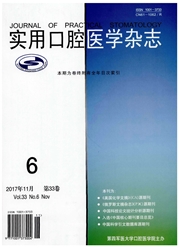

 中文摘要:
中文摘要:
目的 探讨持续性护理对老年髋部骨折患者术后肢体功能恢复的效果.方法 随机将60例髋部骨折术后的患者分为干预组和对照组各30例.对照组给予常规护理,干预组给予持续性护理干预,比较两组Harris髋关节评分、老年抑郁量表、Barthel指数等指标.结果 干预组出院后1个月和三个月Harris髋关节评分优于对照组(P < 0.05).治疗前后不同时间点,两组组内比较差异有统计学意义(P < 0.05).两组出院后1个月以及3个月,两组组间比较差异有统计学意义(P < 0.05),干预组显著优于对照组.两组治疗前后不同时间点GDS评分均有差异,治疗前及出院时、出院后1个月两组间比较,差异不显著,而出院后3个月两组比较差异明显(P < 0.05).结论 持续性护理干预能够改善患者的髋关节功能,提高患者的日常生活能力,改善患者的抑郁状况.
 英文摘要:
英文摘要:
Objective To discuss the efficacy of continuing care for functional recovery in elderly hip fracture patients. Methods Selected 60 cases were divided into intervention group and control group. Control group received normal nursing, and intervention group received continuing care intervention. Harris score, GDS, Barthel of two groups were compared. Results Harris score of intervention group at one month and three months after out of hospital were better than control group(P 〈 0.05). Harris score of two group at different compared in the group had significant difference(P 〈 0.05). Harris score of two group had significant difference at one month and three months after out of hospital (P 〈 0.05), and intervention group was better than the control group. GDS of two groups compared in the group had signifi- cant difference between before treatment and after treatment (P 〈 0.05). GDS of two groups had significant difference at three months after out of hospital (P 〈 0.05). Conclusion Continuing care can improve hip function, improve activities of daily living, and depression.
 同期刊论文项目
同期刊论文项目
 同项目期刊论文
同项目期刊论文
 Effect of calcitonin gene-related peptide on osteoblast differentiation in an osteoblast and endothe
Effect of calcitonin gene-related peptide on osteoblast differentiation in an osteoblast and endothe Effect of calcitonin gene-related peptide on nitric oxide production in osteoblasts: an experimental
Effect of calcitonin gene-related peptide on nitric oxide production in osteoblasts: an experimental 期刊信息
期刊信息
